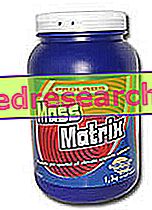What is that
The appraisal was the first process of sterilization of food on an industrial scale. Invented in the 18th century by the French chef Nicolas Appert - who won the 12, 000 francs foreseen for the development of a method for the production of long-life foodstuffs from

How it is performed
The application consists in bringing the food, canned or bottled hermetically sealed, at about 120 ° C for 15-30 minutes in an autoclave (a sort of pressure cooker that uses this physical force to reach the high temperatures necessary for sterilization ; to guarantee the healthiness of the food product it is also important to reach the so-called thermal center, which is obtained by having the food reach a predetermined temperature in all its parts and not only in those directly exposed to heat).
The application can also take place in a continuous cycle: the initial heating is done in very tall towers where the bottles and cans enter a hot water bath (preheating), then into a heated steam chamber, then into a cold water chamber and finally chilled.
On milk and on many other foods the appertizzazione system is no longer used and in many cases cans of metal cans are preferred to glass jars.



